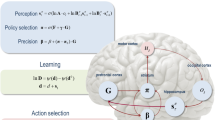Abstract
Pseudoclefts have been divided into two types, specificational and predicational (Akmajian 1970; Higgins 1979). The two types differ in interpretive as well as syntactic characteristics. In this paper we argue that the availability of the specificational type depends on the particular lexical items that a language employs to form pseudoclefts. We discuss the significance of these findings for linguistic theory.
Similar content being viewed by others
REFERENCES
Akmajian, A.: 1970, Aspects of the Grammar of Focus in English, Ph.D. dissertation, MIT.
Barwise, Jon and Robin Cooper: 1981, ‘Generalized Quantifiers and Natural Language,’ Linguistics and Philosophy 4, 159–219.
Bresnan, Joan J. and Jane Grimshaw: 1979, ‘The Syntax of Free Relatives in English,’ Linguistic Inquiry 9, 331–391.
Carlson, Greg: 1981, ‘Distribution of Free-Choice any,’ in CLS 17, Chicago Linguistic Society.
Donnellan, Keith: 1966, ‘Reference and Definite Descriptions,’ Philosophical Review 75, 281–304.
Donnellan, Keith: 1968, ‘Putting Humpty Dumpty Together Again,’ Philosophical Review 77, 203–215.
Enç, Mürvet: 1991, ‘The Semantics of Specificity,’ Linguistic Inquiry 22, 1–25.
Halliday, M. A. K.: 1976, Cohesion in English, Longman, London.
Heggie, Lorie: 1988, The Syntax of Copular Structures, Ph.D. dissertation, University of Southern California.
Heim, Irene: 1982, The Semantics of Definite and Indefinite Noun Phrases, Ph.D. dissertation, University of Massachusetts, Amherst.
Heycock, Caroline: 1991, Layers of Predication: The Non-Lexical Syntax of Clauses, Ph.D. dissertation, University of Pennsylvania.
Heycock, Caroline and Anthony Kroch: 1996, ‘Pseudocleft Connectivity: Implications for the LF Interface Level,’ ms., University of Edinburgh and University of Pennsylvania.
Higgins, Roger: 1979, The Pseudocleft Construction in English, Outstanding Dissertations in Linguistics, Garland, New York.
Iatridou, Sabine: 1994, ‘On the Meaning of Conditional “Then”,’ Natural Language Semantics 25, 171–199.
Jacobson, Pauline: 1993, ‘On the Quantificational Force of English Free Relatives,’ in E. Bach, E. Jelinek, A. Kratzer and B. Partee (eds.), Quantification in Natural Languages, Kluwer, Dordrecht.
Jacobson, Pauline: 1994, ‘Binding Connectivity in Copular Sentences,’ in Proceedings of SALT 4, pp. 161–178.
Kaplan, David: 1989 [1971], ‘Demonstratives. An Essay on the Semantics, Logic, Metaphysics, and Epistemology of Demonstratives and Other Indexicals,’ in J. Almog, J. Perry and H. Wettstein (eds.), Themes from Kaplan, Oxford University Press, Oxford, pp. 481–614.
Keenan, Edward and Jonathan Stavi: 1986, ‘A Semantic Characterization of Natural Language Determiners,’ Linguistics and Philosophy 9, 253–326.
Larson, Richard: 1987, ‘Missing Prepositions and English Free Relative Clauses,’ Linguistic Inquiry 18, 239–266.
Milsark, Gary: 1977, ‘Toward an Explanation of Certain Peculiarities of the Existential Construction in English,’ Linguistic Analysis 3, 1–29.
Moro, Andrea: 1992, The Raising of Predicates: Predicative Nominals and the Theory of Clausal Structure, Ph.D. dissertation, Università di Venezia.
Partee, Barbara: 1986, ‘Ambiguous Pseudoclefts with Unambiguous Be,’ in Proceedings of NELS 16, GLSA, Department of Linguistics, University of Massachusetts, Amherst.
Prince, Ellen: 1992, ‘The ZPG Letter: Subjects, Definiteness, and Information Status,’ in S. Thompson and W. Mann (eds.), Discourse Description: Diverse Analysis of A Fund-Raising Text, Benjamins, Philadelphia, pp. 295–325.
Rullmann, Hotze: 1995, Maximality in the Semantics of Wh-constructions, Ph.D. dissertation, University of Massachusetts, Amherst.
Shakespeare, William: Romeo and Juliet, Act II, Scene 2, line 41.
Sharvit, Yael: 1997, The Syntax and Semantics of Functional Relative Clauses, Ph.D. dissertation, Rutgers University.
Tredinnick, Victoria: 1995, ‘On the Interpretation and Distribution of -ever in English Free Relatives,’ Proceedings of CONSOLE 2.
Williams, Edwin: 1983, ‘Semantics and Syntactic Categories,’ Linguistics and Philosophy 6, 423–446.
Author information
Authors and Affiliations
Rights and permissions
About this article
Cite this article
Iatridou, S., Varlokosta, S. Pseudoclefts Crosslinguistically. Natural Language Semantics 6, 3–28 (1998). https://doi.org/10.1023/A:1008272704531
Issue Date:
DOI: https://doi.org/10.1023/A:1008272704531



